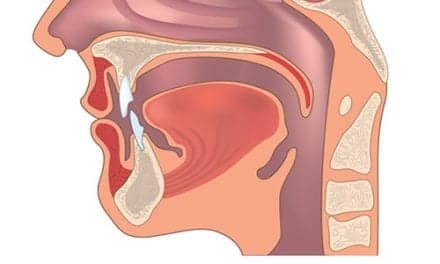Researchers from Australia’s CSIRO have developed a 3D-printed mouthpiece that it believes can be a treatment option for the 22 million Americans who suffer from sleep apnea. The device can be personalized for each patient, potentially adding a more practical alternative to the mix.
The CSIRO researchers developed the mouthpiece in collaboration with Australian dental company Oventus. The team used a 3D scanner to produce a map of a patient’s mouth and printed the device to fit, using a combination of titanium and medical grade plastic.
The design separates the airflow into two separate passages. The “duckbill,” a titanium spout protruding from the patient’s mouth when in use, enables a clear airflow to the back of the throat, avoiding potential obstructions such as the tongue or relaxed muscles at the rear of the mouth.
“It’s an exciting prospect for people suffering from the debilitating disorder and the design offers significant benefits which cannot be achieved with more traditional manufacturing techniques,” says CSIRO’s 3D-printing expert, John Barnes.
The CSIRO expects the device will be available to patients in 2015.











Would like to try one of theses devices, please keep me informed. thank you